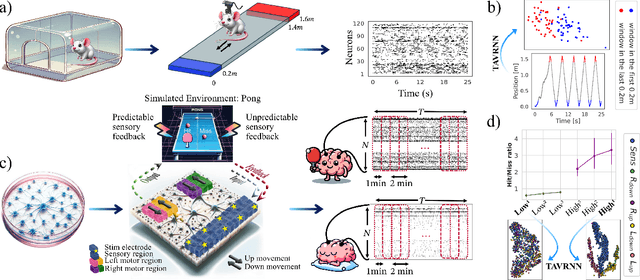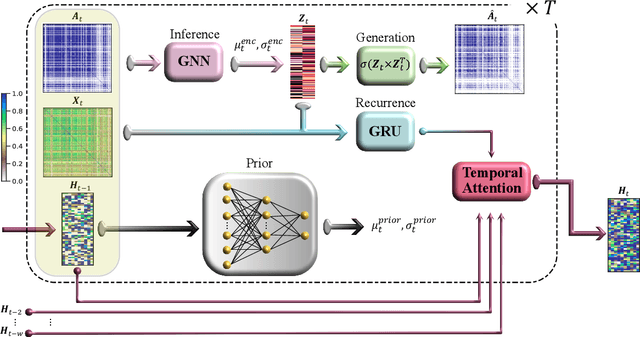TAVRNN: Temporal Attention-enhanced Variational Graph RNN Captures Neural Dynamics and Behavior
Paper and Code
Oct 01, 2024



We introduce Temporal Attention-enhanced Variational Graph Recurrent Neural Network (TAVRNN), a novel framework for analyzing the evolving dynamics of neuronal connectivity networks in response to external stimuli and behavioral feedback. TAVRNN captures temporal changes in network structure by modeling sequential snapshots of neuronal activity, enabling the identification of key connectivity patterns. Leveraging temporal attention mechanisms and variational graph techniques, TAVRNN uncovers how connectivity shifts align with behavior over time. We validate TAVRNN on two datasets: in vivo calcium imaging data from freely behaving rats and novel in vitro electrophysiological data from the DishBrain system, where biological neurons control a simulated environment during the game of pong. We show that TAVRNN outperforms previous baseline models in classification, clustering tasks and computational efficiency while accurately linking connectivity changes to performance variations. Crucially, TAVRNN reveals that high game performance in the DishBrain system correlates with the alignment of sensory and motor subregion channels, a relationship not evident in earlier models. This framework represents the first application of dynamic graph representation of electrophysiological (neuronal) data from DishBrain system, providing insights into the reorganization of neuronal networks during learning. TAVRNN's ability to differentiate between neuronal states associated with successful and unsuccessful learning outcomes, offers significant implications for real-time monitoring and manipulation of biological neuronal systems.
 Add to Chrome
Add to Chrome Add to Firefox
Add to Firefox Add to Edge
Add to Edge